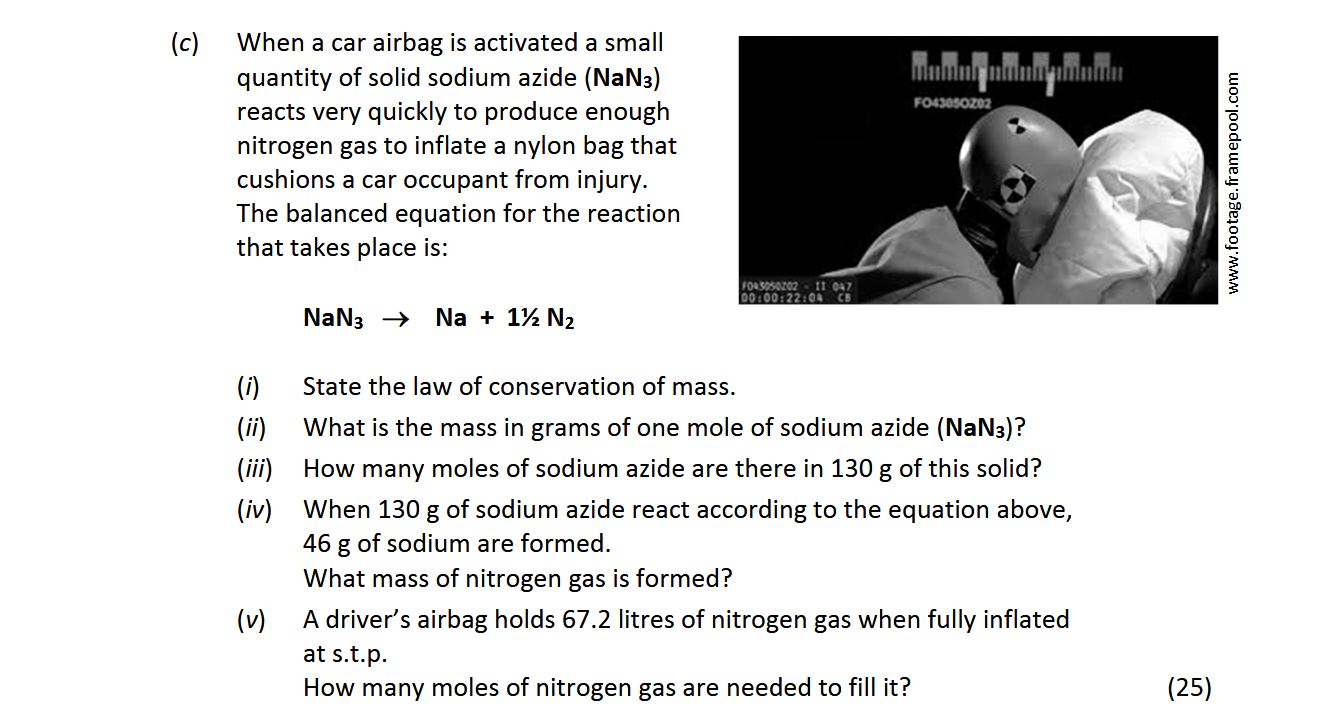Photo AI
When a car airbag is activated a small quantity of solid sodium azide (NaN₃) reacts very quickly to produce enough nitrogen gas to inflate a nylon bag that cushions a car occupant from injury - Leaving Cert Chemistry - Question c - 2017
Question c

When a car airbag is activated a small quantity of solid sodium azide (NaN₃) reacts very quickly to produce enough nitrogen gas to inflate a nylon bag that cushions ... show full transcript
Worked Solution & Example Answer:When a car airbag is activated a small quantity of solid sodium azide (NaN₃) reacts very quickly to produce enough nitrogen gas to inflate a nylon bag that cushions a car occupant from injury - Leaving Cert Chemistry - Question c - 2017
Step 1
State the law of conservation of mass.
Answer
The law of conservation of mass states that in a chemical reaction, the total mass of the reactants is equal to the total mass of the products. This implies that matter cannot be created or destroyed, but can only change from one form to another.
Step 2
What is the mass in grams of one mole of sodium azide [NaN₃]?
Answer
To calculate the mass of one mole of sodium azide (NaN₃), we sum the atomic masses of its constituent elements:
- Sodium (Na): 23 g/mol
- Nitrogen (N): 14 g/mol (for three nitrogen atoms: 3 x 14 g/mol)
Thus, the total mass is:
Step 3
Step 4
What mass of nitrogen gas is formed?
Answer
According to the reaction, for every 2 moles of sodium azide (NaN₃) that decompose, 3 moles of nitrogen gas (N₂) are produced. From the problem, we know that 130 g of NaN₃ produces 46 g of sodium. To determine the mass of nitrogen produced, we first calculate how many moles of sodium were formed:
- Molar mass of sodium = 23 g/mol
So:
Now, since 2 moles of NaN₃ yield 3 moles of N₂, we can find the mass of nitrogen gas produced:
To find the mass of nitrogen gas produced:
- Molar mass of nitrogen (N₂) = 28 g/mol, Thus:
Step 5
